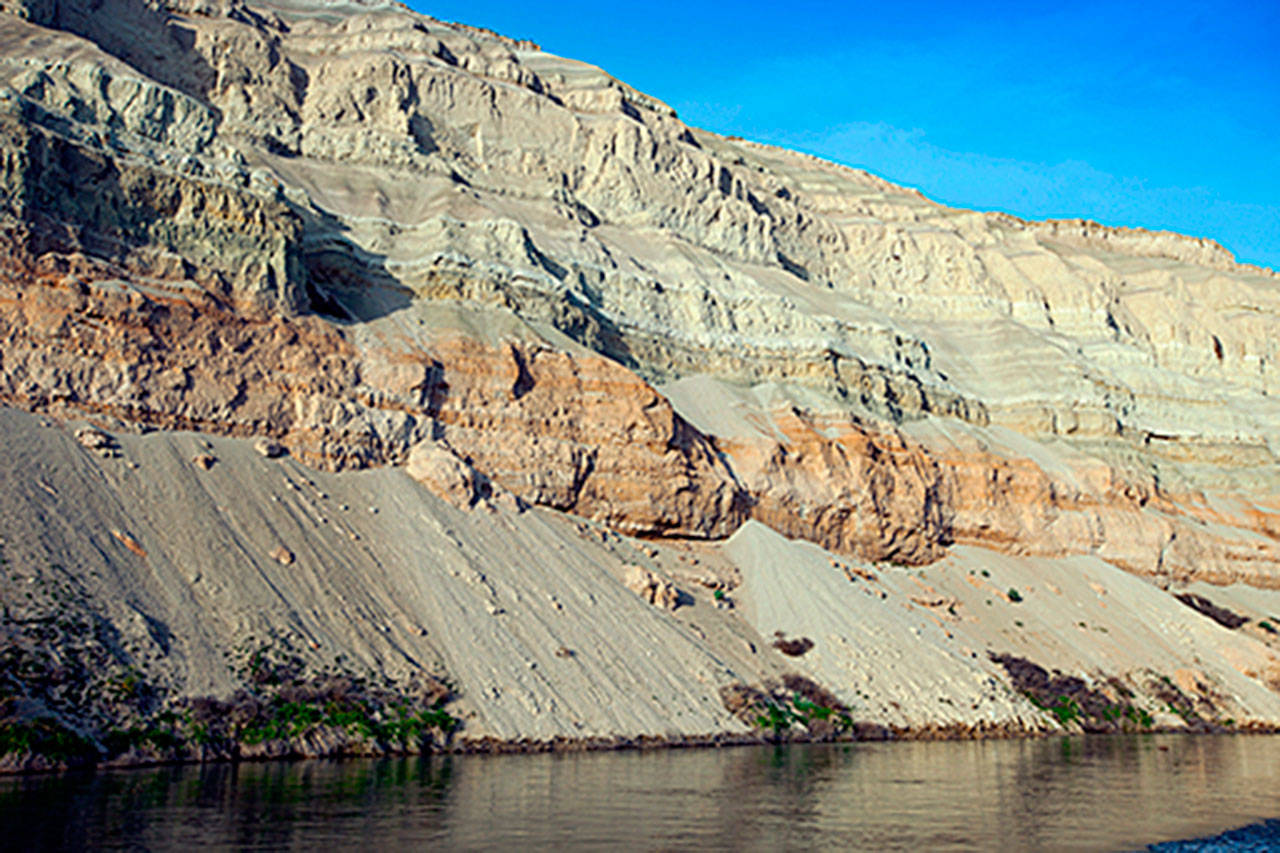By The Herald Editorial Board
They want public comment? Give them public comment.
Following an executive order signed by President Trump last month, U.S. Secretary of the Interior Ryan Zinke has ordered the review of 22 national monuments and five more marine national monuments that were established since 1996 by Presidents Clinton, Bush and Obama under the authority granted presidents by the 1906 Antiquities Act.
The intent of reviewing past presidents’ national monument designations is clear: providing cover for President Trump to shrink the size of monuments, change the public lands’ protections or eliminate the monuments all together.
Among the seven national monuments in the Northwest, three fall under terms of the review: Cascade-Siskiyou in Oregon, Craters of the Moon in Idaho and Washington state’s Hanford Reach.
The review, Zinke said last week, “finally gives a voice to local communities and states when it comes to Antiquities Act monument designations,” calling local input “critical” to federal land management and adding that there is “no predetermined outcome for any monument.”
The public has 60 days following formal publication of the notice this Friday to comment on each of the national monument designations. Utah’s Bears Ears National Monument, created by President Obama last year, is the exception; the comment period is limited to 15 days.
“Local input,” however, appears not so critical that it requires more than 60 days — and only 15 for Bears Ears — for the Department of Interior, which by Zinke’s own assessment is currently understaffed, to gather comment to complete its assessments. If no outcome is predetermined, why the rush?
Zinke’s statement also ignores the history of the establishment of each monument and assumes each was created in a vacuum by presidential fiat and without consultation and comment from the public and other stakeholders.
The Hanford Reach National Monument, established in 2000 by President Clinton, provides a good example of the lengthy public process involved in designating monuments.
Hanford Reach, according to histories found at Historylink.org and the White House’s online archive, owes its preservation to the Atomic Age. As part of the Manhattan Project to develop an atomic bomb during World War II and the need for production of plutonium for the nation’s nuclear arsenal in years following, the federal government bought up 400,000 acres of property in southeast Washington, north of the Tri-Cities.
That history has left a legacy of nuclear waste and a glacially slow and expensive cleanup project at the Hanford Nuclear Reservation, but it also prevented development of the lands that served as a buffer around the reservation’s reactors and other facilities. Concern about the possible spread of contamination prevented the construction of a dam in the early 1970s that would have flooded the Columbia River Basin and the decommissioned reactors built along its banks.
The result were hundreds of thousands of acres of land that include the largest remaining remnant of shrub-steppe ecosystem that once blanketed the basin; the last free-flowing stretch of the Upper Columbia, where 80 percent of the state’s fall chinook salmon spawn; a thriving population of native and animal plant species; a rich geologic history; and well-preserved artifacts of the region’s American Indian ancestors that reach back 10,000 years.
Efforts to protect the region predate by decades Clinton’s proclamation.
As early as 1971, Congress created the Saddle Mountain National Wildlife Refuge, which would become part of the monument.
And in 1988, Congress directed the National Parks Service to recommend measures to protect the Hanford Reach. Six years later, the National Parks Service recommended areas for protection as wildlife refuges and a National Wild and Scenic River designation for the Columbia that would prevent damming and dredging of the Upper Columbia. Between 1995 and 1999, Sen. Patty Murray, D-Washington, and other lawmakers pushed for Wild and Scenic protections for the Columbia but couldn’t get legislation out of Congress.
In 1999, following discussions among the state, local city and county governments, the region’s tribes, federal agencies and environmental groups, the Department of Energy proposed setting aside nearly 195,000 acres that sandwich the nuclear reservation as a national monument to be managed by the U.S. Fish and Wildlife Service. Sen. Murray asked the Clinton administration to consider designating Hanford Reach as a national monument, which Clinton signed in June, 2000.
Just a year after the monument’s designation, Sen. Murray was back before Congress, defending against the claim that the decision was made without public involvement. Murray in a July, 2001 floor speech, pointed to years of process and numerous public meetings that recognized the area’s energy and agricultural resources and resulted in provisions that allow electrical transmission lines to cross the monument and others that determined the monument’s boundaries to allow for agricultural and commercial development.
“The final decision was that the ecological and historical values of the Reach merited protection as a national monument,” Murray said in 2001. “We knew what we were doing by the designation. We knew we were choosing to protect unique and vital habitats. We knew we were honoring important cultural sites. We intended to leave this legacy to future generations.”
Zinke and the Department of Interior will proceed with the review, and the public should take this opportunity to again make cases — for or against — the monuments.
But any fair and reasoned review of Hanford Reach or any other of the national monuments should not, we believe, come to a different conclusion than arrived at by the three previous presidents.
To comment
Comments can be mailed to Monument Review, MS-1530, U.S. Department of Interior, 1849 C Street NW, Washington, D.C. 20240 or submitted online after May 12 at https://www.regulations.gov/ and searching for “DOI-2017-0002.”
More on monuments:
“Editorial: Trump should leave national monuments as they are,” The Herald, April 26, 2107
Talk to us
> Give us your news tips.
> Send us a letter to the editor.
> More Herald contact information.

























